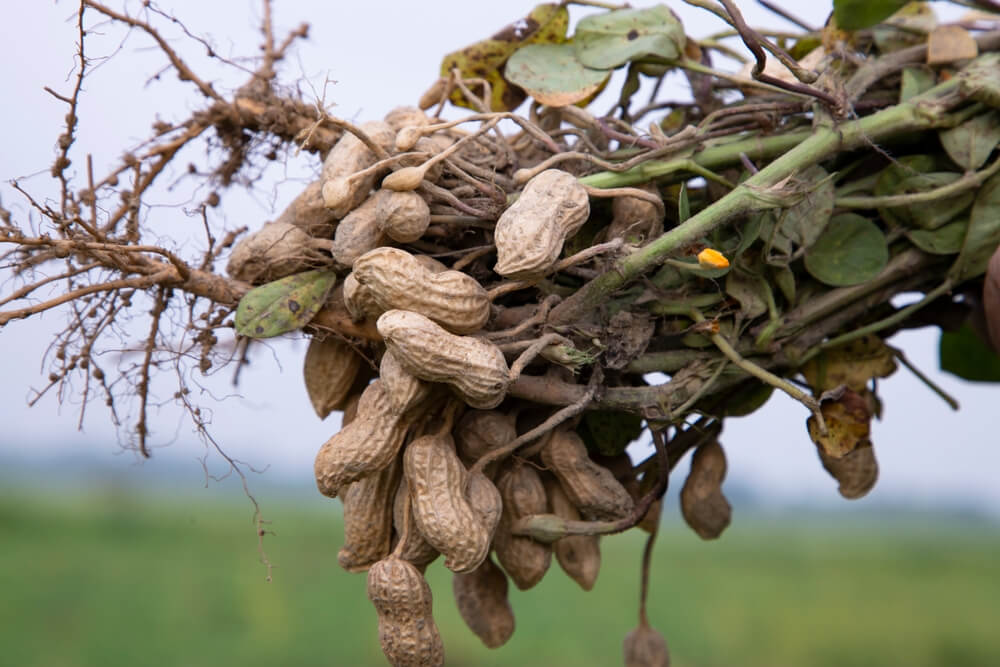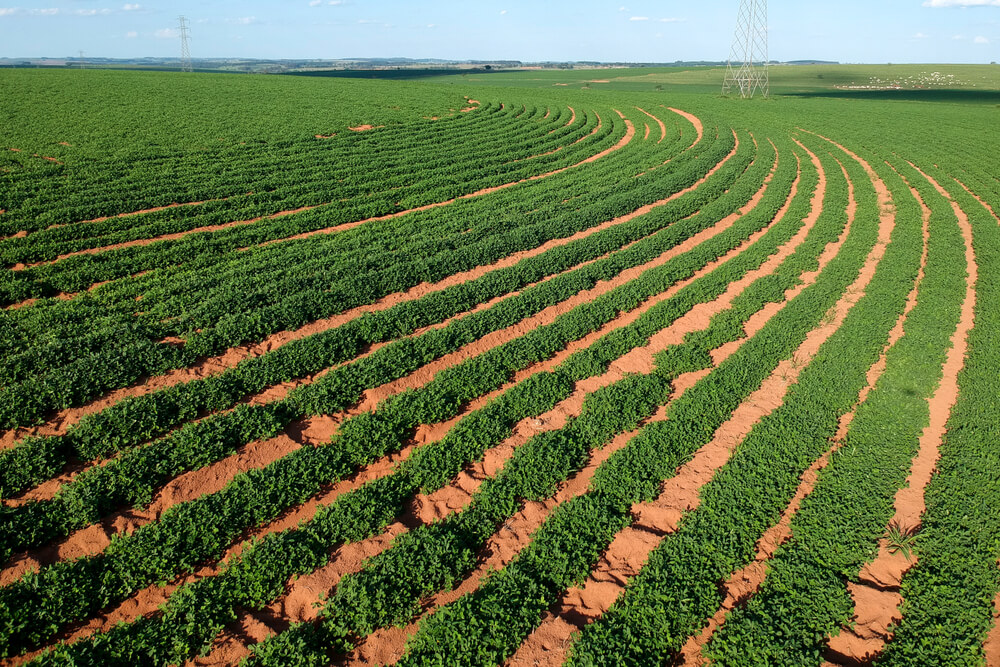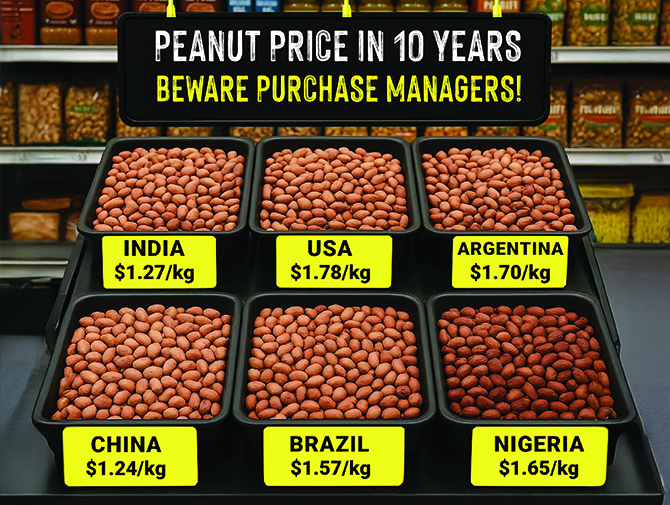

An ounce of information
.jpg)
Article by Pnut King
Published on 07/13/2023 in Peanut Farming
Peanuts are one of the most widely consumed oilseeds in the world, with the United States Department of Agriculture (USDA) reporting that 49.8 million metric tons were produced worldwide in 2022/23.
Groundnuts have multiple uses: as a key ingredient in a wide range of snacks, confections, and peanut butters, and as a protein-rich fuel for bird and animal feed. Equally, peanut oil, peanut flour, and even peanut shells have their uses in cooking, baking, and for biofuel.
But where are they grown?
China is the world’s largest producer of groundnuts. In 2022/23, Chinese peanut production hit 18.3 million mt, an increase of 4% on the previous five-year average, with continued growth fuelled by seriously high domestic demand. As a result of this demand, China is also by far the largest peanut importer in the world, bringing in an astonishing US$1,028,039,000 worth of peanuts in 2021.
Seventy percent of Chinese peanuts are grown in the Shandong, Henan, Hebei, Guangdong, and Jiangsu provinces, and farmers in these areas are able to produce impressive yields. The “Hsuji” variety, known elsewhere as the “Spanish” type, is the most popular.
China's agriculture is characterized by a smallholder farming system. An astonishing 210 million farm households operate on cropland of less than 0.667 hectares each, and the average farm size is only.497 hectares. In 2022, China's peanut yield amounted to about 3.8 mt per hectare.
 Indian peanut production fell 7.4% in 2022/23 to 6.3 million mt. The country is the second-largest producer in the world and has long been known for its superior groundnuts. Thanks to favourable climatic conditions, fertile soil, and growing investment in modern agricultural and manufacturing processes and machinery, India continues to build on its peanut reputation.
Indian peanut production fell 7.4% in 2022/23 to 6.3 million mt. The country is the second-largest producer in the world and has long been known for its superior groundnuts. Thanks to favourable climatic conditions, fertile soil, and growing investment in modern agricultural and manufacturing processes and machinery, India continues to build on its peanut reputation.
Gujarat is the highest peanut-producing state in India, accounting for as much as 37% of the country’s output. Other states such as Andhra Pradesh, Tamil Nadu, and Karnataka are also significant producers of groundnuts.
Indian farmers own an average of 1.08 hectares of land, and in 2022, India’s peanut yield amounted to about 1.2 mt per hectare.
Nigerian peanut production is on the rise, growing by 6.4% in 2022/23 to 4.5 million mt. The warm and humid climate and well-drained soil of northern Nigeria are particularly well suited to peanut farming, and continue to support growing demand. Peanut oil is widely used for cooking in Nigeria, thanks to its high smoke point and delicious nutty flavour.
The average farm size for subsistence farmers in Nigeria ranges from 1 to 3 hectares, with farms in the north typically larger than in the south. In 2022, Nigeria’s peanut yield amounted to about 1.3 mt per hectare.
 Although not one of the largest producers in the world, Argentina produces a consistent high-quality peanut supply. In 2022/23 it produced 1.15 million mt, down from 1.34 million mt the previous year due to a drop in both yield and planted area. The nation places particular emphasis on the quality of its products. As a result, Argentinian peanuts are commonly used in luxury snacks, and for whole-nut confectionery.
Although not one of the largest producers in the world, Argentina produces a consistent high-quality peanut supply. In 2022/23 it produced 1.15 million mt, down from 1.34 million mt the previous year due to a drop in both yield and planted area. The nation places particular emphasis on the quality of its products. As a result, Argentinian peanuts are commonly used in luxury snacks, and for whole-nut confectionery.
Argentina’s peanut producers yield 3.3 mt per hectare on average.
Alongside Europe, the US is one of the world’s most lucrative markets for peanut products, thanks to high retail prices and heavy demand (especially for peanut butter). It’s also a well-established peanut producer in its own right, with a focus on Runner peanuts. This variety makes up more than 80% of the peanuts grown in the US, and is mostly used to make peanut butter and confections.
US peanut production yields about 4.5 mt per hectare.
Sudan is the fifth largest producer of peanuts in the world, and produced 2.5 million metric tons in 2022-23. Groundnuts represent around 35% of all cash crops grown in Sudan, with the regions of Kordofan, Blue Nile, Darfur, Kassala and Northern the top producers.
Sudan peanut production yields an average of 0.8 mt per hectare.
Senegal is the third largest peanut country in Africa, and peanut farming involves more than half of the rural population, supporting around 4 million livelihoods. In 2022/23, 1.7 million metric tons of peanuts were produced in Senegal. 90% of these were exported to China.
95% of Senegal's farms are smallholdings, with farm size ranging from 1.5 to 5 hectares. On average, these farms yield 1.3 mt of peanuts per hectare.
Brazil is South America's second-largest peanut producer, and the second largest peanut consumer in America, after the United States. Brazil’s climate gives farmers a wider range of choices over planting and harvesting seasons than usual, making it possible for them to plant crops either before or after a peanut harvest.
Brazilian peanut production in 2022/23 was 750,000 metric tons at a yield of 3.7 mt per hectare.
Globally, the peanut trade is booming, with global production on track to hit 54 million metric tons by 2026. Peanut butter remains hugely popular, with Americans alone each said to eat around three pounds of peanut butter every year, enough to coat the floor of the Grand Canyon.
With no signs of demand slowing down, groundnuts are set to remain a staple of global diets for years to come.
With over 17 years of experience in the peanut industry and numerous awards recognising his contributions, he founded Agrocrops in 2008, a leading global peanut company. His passion for peanuts drives his commitment to improving the industry for all stakeholders and promoting sustainability.
.png)
Published on 11/08/2025 in
.png)
Published on 04/08/2025 in

Published on 01/08/2025 in
.png)
Published on 31/07/2025 in
